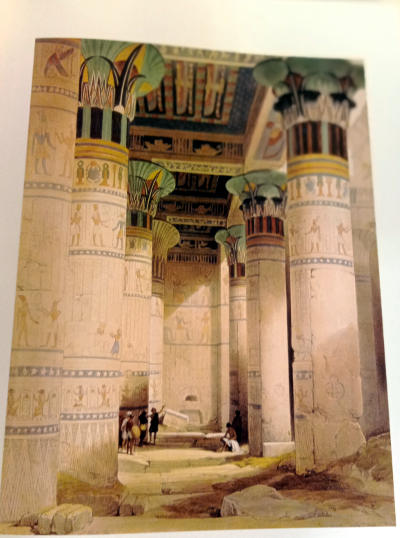About the book (from the Metropolitan Museum of Art):
Roberts was the first professional artist to visit the Near East without a patron or a connection to a military expedition or missionary group. He sailed to Alexandria in 1838 and for eleven months traveled up the Nile River, across deserts and mountains, through Egypt and the Holy Land, to arrive in Jerusalem on Easter 1839. He continued north to Lebanon and departed from Beirut in May. R
oberts recorded his impressions of landscapes, temples, ruins, and people in three sketchbooks and more than 272 watercolors. These sketches and paintings provided the basis for the 247 lithographs published with text between 1842 and 1849 as the three-volume “Holy Land.”
The images were produced by Louis Haghe, the best and most prolific lithographer of the time. Originally from Tournai, Belgium, Haghe moved to England before 1825 and established himself as specialist of the hand-tinted lithograph. His sensitive handling of the lithographer’s tools imparts a range of tonality and color as well as a sense of the delicacy and spontaneous quality of Roberts’s original images.
Roberts’s plates are among the most popular images of famous sites in the Near East. As John Ruskin wrote they make “true portraiture of scenes of historical and religious interest. They are faithful and laborious beyond any outlines from nature I have ever seen.”










